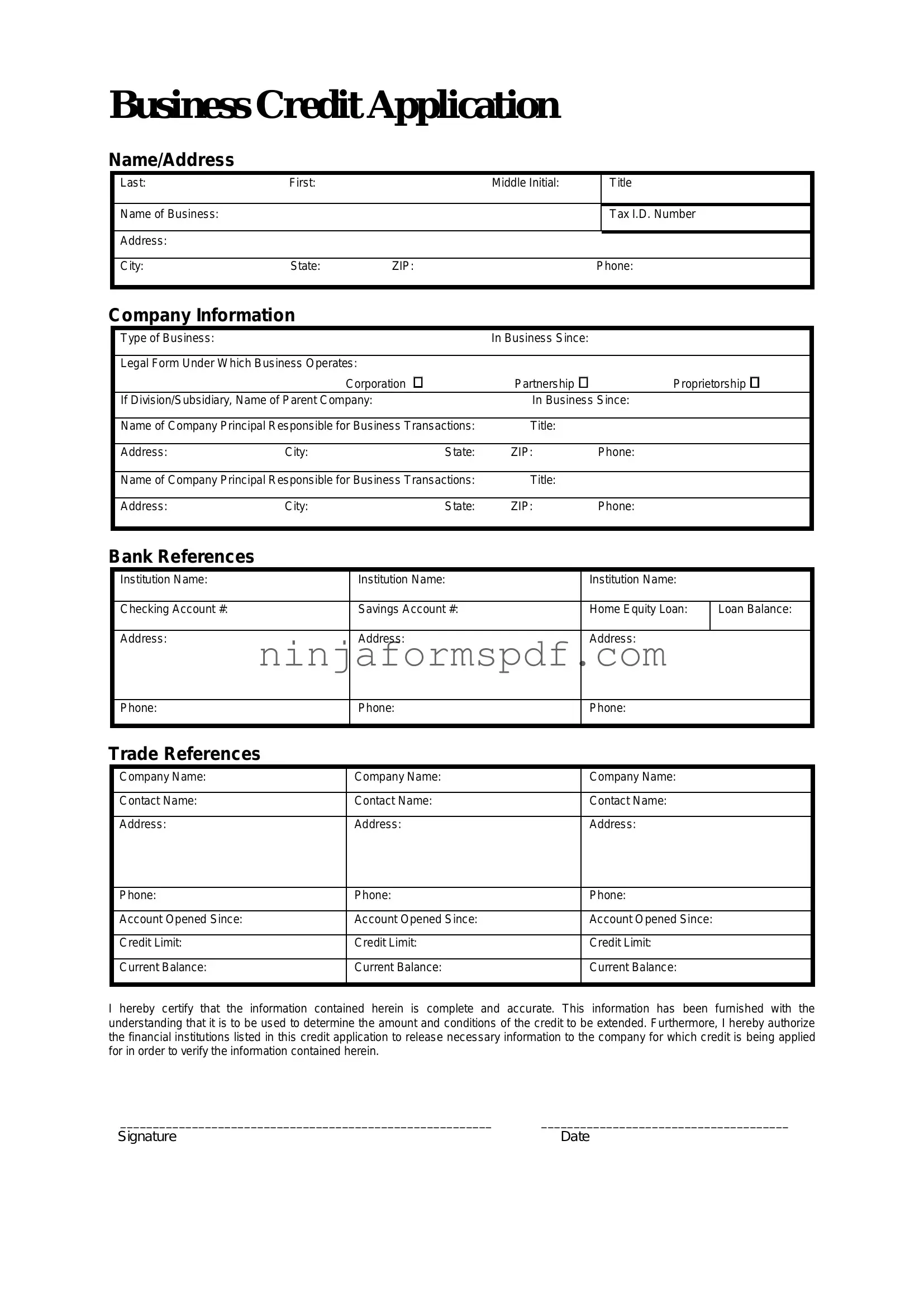What is a Business Credit Application form?
A Business Credit Application form is a document used by businesses to request credit from a lender or supplier. It typically asks for information about the business seeking credit, including financial details, business history, and the nature of the credit being requested. This form helps the lender or supplier assess the creditworthiness of the business applying for credit.
Why do businesses need to fill out a Credit Application form?
Filling out a Credit Application form is essential for any business that wishes to establish a line of credit or financing through a lender or obtain goods and services from suppliers on credit terms. This process allows the lender or supplier to evaluate whether the business is a good credit risk, ensuring that the entity providing the credit can do so with confidence about being repaid.
What kind of information is required on this form?
The Business Credit Application form typically requests details such as the business name, address, tax identification numbers, nature of the business, financial statements, bank references, trade references, and sometimes personal information of the owners or principals, especially in the case of small businesses. These pieces of information help lenders or suppliers to understand the financial stability and credit history of the business.
How do confidentiality and privacy apply to the information provided in the form?
Confidentiality and privacy are paramount when filling out a Business Credit Application. The information provided will be used solely for the purpose of evaluating the business’s creditworthiness. Many lenders and suppliers have strict policies governing the handling of this information, ensuring it is protected against unauthorized access or disclosure.
Can a Business Credit Application affect a business’s credit score?
Yes, in some cases, applying for business credit can affect the company's credit score. If the lender performs a hard inquiry on the business's credit report, it might slightly lower the business credit score temporarily. However, this is typically a minor effect and should not be a significant concern if the business manages its credit responsibly.
Is it possible to be denied credit after submitting this form?
Yes, it is possible for a business to be denied credit after submitting a Business Credit Application. The decision to extend credit will be based on the lender’s or supplier’s assessment of the business's creditworthiness, including financial health, credit history, and the risk associated with the credit requested. A denial can occur if the business does not meet the credit grantor's criteria.
What steps should be taken if credit is denied?
If credit is denied, it's advisable to first request feedback from the lender or supplier on the reasons for the denial. This information can be invaluable for addressing any issues and improving the business’s creditworthiness. Additionally, reviewing credit reports for inaccuracies, paying down existing debt, and improving financial documentation can help in future credit applications.
Can a business negotiate terms on a Credit Application?
Yes, in many cases, businesses can negotiate the terms of a credit agreement based on the credit application. Terms such as payment periods, interest rates, and credit limits can often be negotiated to suit both the lender’s and the borrower's needs. Effective negotiation requires a good understanding of the business’s financial situation and the value it offers to the creditor.
How often should a Business Credit Application be updated or renewed?
It is a good practice to update or renew a Business Credit Application whenever there are significant changes to the business’s financial situation, ownership, or operations. Moreover, suppliers or lenders may require periodic updates to maintain the credit relationship, often on an annual basis or according to the terms of the credit agreement.

